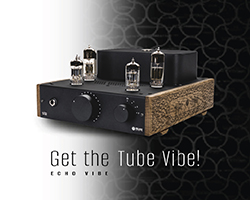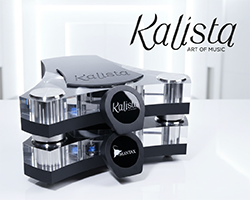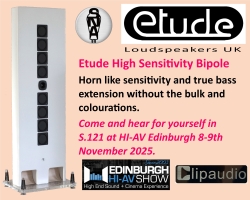QUAD 33/303 PREAMP AND POWER AMP REVIEW
QUAD’s 33/303 is a classic British preamp and power amp combination from the late 1960s. In this review, Janine Elliot takes a look at the brand new incarnation of the QUAD 33 Preamp and 303 Power Amp that cost £1199 each.
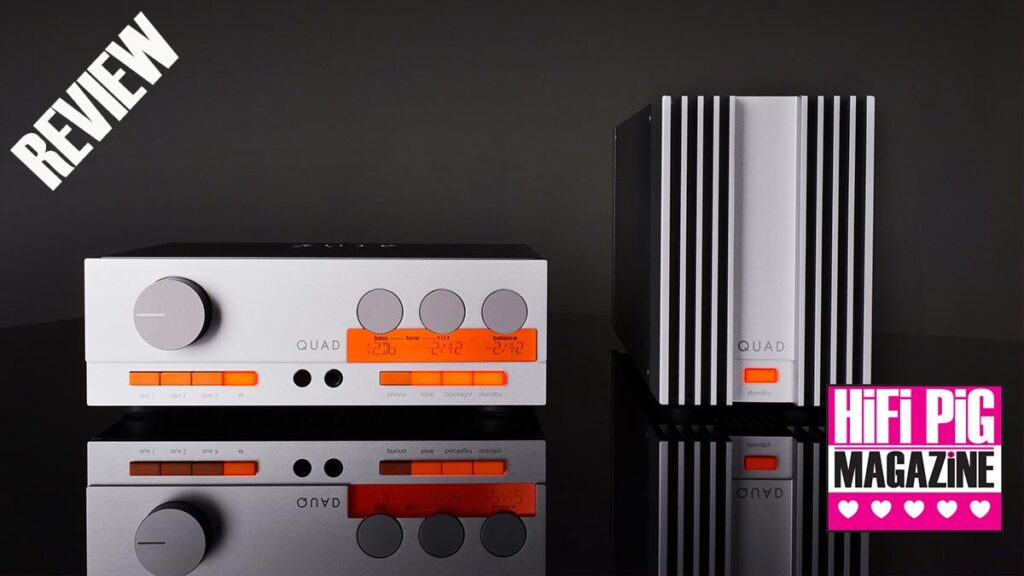
There are some lovely names from the past, especially car names like “Capri”. Even though that name was originally a coupe version of the 1961 Ford Consul, it was the 1969 Capri, designed to take on the USA Mustang, that we all remember. In audio, names like QUAD 33 and QUAD 303 bring back memories of similar greatness in UK audio, built from their factory in Huntingdon, Cambridgeshire. Whilst the name “Capri”, and indeed “Mustang” might now be meaningless with the new EV 5-door SUV hatchbacks that, apart from the names, bear no relationship to the originals (OK, apart from a similar D-shape side window and the badge on the Capri) the same cannot be said for the 21st-century version of the iconic 33/303 QUAD combination from 1967. Not only do they look like the originals (even to the extent of the colours and shapes), but they still retain some of the design philosophy from the original (see later). I yearned to own the originals in the 1970s (and even a Matchbox Ford Capri!), finally getting the QUAD 20 years later, but would I be quite so eager to get my hands on the new retro QUAD? Time to traverse the audio-bahn.


1967 marked a significant year in the evolution of 20th-century HiFi. Valve amps had been ruling the roost of many years with iconic pre/powers from Leak (Varislope + Stereo20) and The Acoustical Manufacturing Company (QUAD 22 + II). Transistor amps appearing at this time just didn’t sound that good. That wasn’t until the 50E professional in 1966 and the 303 domestic that followed the next year. Most audiophiles in the 70s and 80s would prefer the “better looking” 405 (I had one and modified it before selling it, but I wish I had kept it!), but it is the 303 (and mono-50E) that were particularly liked by the broadcasting and recording studios of the world. To get rid of the thermal instability problems that harassed designers of transistor amplifiers of the time Quad founder Peter J Walker came up with the “Triples” output stage, basically a set of 3 transistors in line that kept everything running cooler. If it gets too hot, the output power is reduced until it cools and then is restored. Clever! This circuit topology also resulted in very low distortion, prompting QUAD to promote the 303 as “the world’s first low distortion transistor amplifier”, to take on the Leak “Point One” amplifier (0.1% distortion). Of course, Walker is best known for saying that the perfect amplifier is “a straight wire with gain”. Trying to get my head around that one as a naïve young teenager starting to explore basic electronics was rather confusing for me!
That 33/303 combination ended up being Quad’s most prolific production amplification, with 120,000 and 94,000 made, respectively. Having owned 33/303 and 44/405 combinations, it is the former that I finally warmed to most; indeed, the sound produced is often described as “warm”, a very musical and easy-listening environment that would have amazed many audiophiles of the day, having nicely warmed themselves up to a valve sound.
Peter Walker set up the “Acoustical Manufacturing Company” in 1936, two years after Leak began, having initially made public address systems and then going into domestic and professional amplification under the “QUAD” label (Quality Unit Amplifier Domestic). The acronym QUAD just sounded much better and was easier to roll off the tongue, so it became the new company name in 1983, two years after the launch of the iconic replacement to the 1957 ESL57 electrostatic speaker, the ESL63 (‘63’ being the year they started developing it). Like many British companies (see my recent review on Cambridge Audio) the company has seen several takeovers. In 1995, QUAD Electrostatics Ltd was bought by the Verity Group, joining other great British names of the past such as Wharfedale and Mission. Production, inevitably, went over to China. In 1997 Verity Audio was sold off to Chinese IAG (International Audio Group) under the auspices of Bernard and Michael Chang, whose other “brands” included several other famous British names including AudioLab, Castle, Leak and Ekco, plus the excellent Luxman (and Wharfedale and Mission, of course). QUAD is still very much alive, though Peter Walker will never be forgotten, and it was a sad loss in 2003 when he died at the age of 87, as he was someone who still had great ideas in his head, on paper, and as prototypes that could have made incremental changes in the evolution of HiFi, such as a 3D cube-shaped electrostatic speaker, better known as “Peter’s Balls”!
BUILD QUALITY AND FEATURES OF THE NEW QUAD 33/303
The new 33/303 retains much of the ethos of the original model, including the famous visible cooling fins on the 303 (though morphed from 4 fins on each side to 5), that really made their mark in the 405. Both won design awards for their looks, including the Council of Industrial Design Award in 1969, and today the 33 sits proudly in New York’s Museum of Modern Art. It is the very clever “Triples” output stage on the 303 that has also been retained in the new model, despite little need for it with all the excellent development in circuitry over the past 50 years. Of course, there are many changes in the design, though I have to say it still retains much of the great, smooth sound of the original model. The original 33/303 was hard to beat in the 70s, so the new model has a lot to live up to.
The 33 pre-amp has the most changes, though it still retains the iconic looks of the original. The slightly larger orange-coloured area below the three indented controls on the right now holds an LED screen to let you know all you need to know about the operation. Those three knobs now have bass, tilt and balance controls. Instead of +/-3dB bass and treble and a slope filter option, there is a +/-3dB bass control, plus a more agreeable tilt control taken from their later 34 preamp from 1982 which tilts the bass and treble plus or minus 3dB on either side from a flat response at 700Hz, like a child’s swing, and a very clever idea from someone who didn’t like tone controls. I did try both of them, but naturally preferred it all flat. Just like the original 33 had a balance control underneath the volume knob, adjusting a few dBs to get your imperfect living room sound balanced, the new 33 allows 3dB adjustment from the third knob on the right. Underneath the orange display are four buttons to select phono input, toggling between MM and MC, a tone button to put tone control live, a backlight button, and a standby button. With the latter, unless you have connected the (not supplied) 3.5mm jack-to-jack 12V trigger connections to the 303 amplifier, it won’t turn the 303 out of standby mode unless you press its own orange button on the front of the power amp. That was my first mistake in using the unit; switching on the rocker off/on switches at the rear of the two units only puts the units into standby, despite both lighting up orange! You need to press the already-orange-lit rectangular light on the front of the 303 amplifier to make it even more orange and get it out of standby! On the left of the 33 pre-amplifier are the 4 line-level source switches; three RCA aux’s and 1 balanced XLR. The volume control is a motorised Alps pot – pure analogue. Indeed, this amp is predominantly analogue, despite the “digital” looks of the orange screen EQ control and selectors with its microprocessor-controlled interface. In the centre is the ¼ inch headphone socket for 20-600ohm headphones next to an IR receiver window. The rear is where all the real fun is, though. No longer do we have DIN sockets and trap-doors to insert your MM or MC phono amps and tape output circuitry. Everything is here; XLR ins and outs, a pre-output (post volume control) and AUX output (a direct output for external integrated amp or tape record input to your cassette deck!) There is also a USB update socket, so you can load an update onto a dongle and then insert it in the 33 and follow instructions, plus the 12V trigger sockets to connect to a 303, or two 303’s if you put them in mono bridged mode. There is also a matching remote control with all functions onboard, including mute and backlight level adjustment.


The 303 power amplifier slightly ups output from 45W to 49.5W into 8 ohms or 70W at 4 ohms. In bridged mode, this is upped to 140W and 170W, respectively. This is a Class AB amplifier with a 200VA toroidal transforme,r plus gold-plated speaker binding posts, much better than the “holes” in the original model. Whilst on-paper specification is nothing to write home about (1% THD, for example) this is a stunning unit with XLR and RCA inputs (selected with a small button), 12V trigger in/out, plus a switch to choose between stereo or bridged mono output. I remember seeing a Hitachi amplifier in the 1980s with absolutely stunning specifications, but the all-important sound was anything but! So, your ears are more important than what your eyes can read on a sheet of paper.





At £1199 for each of the QUAD separates, the sound was what made me so excited about these new products. I loved it!
The build quality is excellent, although the grey-on-silver print on the 33 is so hard to read! The units are a better, slightly lighter grey colour than the originals, which makes the older separates look like they’ve sat in a room full of cigarette smoke for 57 years. Also, whilst the user manuals supplied with the products look quite amazing, full of lovely pictures and good explanations, it had a number of errors! QUAD should be so proud of these new members of the family, so it needs to get everything absolutely right, including the print! (When I returned the units to QUAD I highlighted the mistakes in the manual so they can get it reprinted!) My only other question mark is why they didn’t add Bluetooth or digital inputs? I know this is a retro 1967 model, but we are now in the 21st Century. I know it would probably put the price up, but IAG did do it on their £699 retro LEAK Stereo 130 from 2021. I guess this new retro 33/303 is what Peter Walker would have designed in 1967 if he had the solid-state technology of the 21st century, but I would have liked to see Bluetooth included, though maybe QUAD have trie to keep true to the originals as much as possible whilst retaining the retro vibe. Maybe they’ll make a matching retro FM3 tuner that has a Bluetooth, Wi-Fi and CD player network streamer – I wish.
This new 33/303 pairing is designed by QUAD’s David McNeill, who has been with QUAD for some 20 years, with Jan Ertner, lead electronics designer (who also works with IAG’s sister brand Audiolab), plus Rob Flain and Paul McConville. These last two guys know all there is to know about QUAD amplifiers past and present, so this new reincarnation should sound good.
Finally, to the remote; yes, it’ll do the job very nicely, but it’s only plastic and I wished it would look as good as the 33. Maybe some orange colour.
SOUND QUALITY
Whilst the original 33 had 45W into 8 ohms, the output was actually less into lower loads, making it harder to work with today’s 4-to-6-ohm speakers. This new model was only a few Watts more, but I found it worked well with my LS5/9s and Wilson Benesch Arcs at their 6-ohm load, and even my 15 ohm Chartwell LS3/5a’s worked well, though volume control was higher than on my resident amplifiers. That said, the 303 never gave me a sense of being underpowered. This is no Krell or McIntosh, though, so don’t assume you want to play at deafening levels. You’ll want to enjoy the music here, so more neighbourly levels are appreciated. This is a 303, after all, though 10A maximum current delivery is still enough to give you very realistic peaks. And, if you have another £1199 to spend, you can have two 303’s and bridge them to give more Krell-like muscle. For the review, I used a single 303, having initially spent time on my mothballed 1967 33/303, reliving that amazingly warm and musical vibe. I forgot just how lovely they were! So, the new models would have to do a lot to make me feel their latest adventure was worth it. Running cooler than my old 303, the 21st-century pairing looked so lovely in my music room, I really wanted to buy the pair even before I started to listen! I remember reading an article a few years back by a very famous reviewer who said the cable he was auditioning was so goo,d but that it wouldn’t be taken seriously by anyone as it was just too cheap! At £1199, the separates are similarly excellent value.

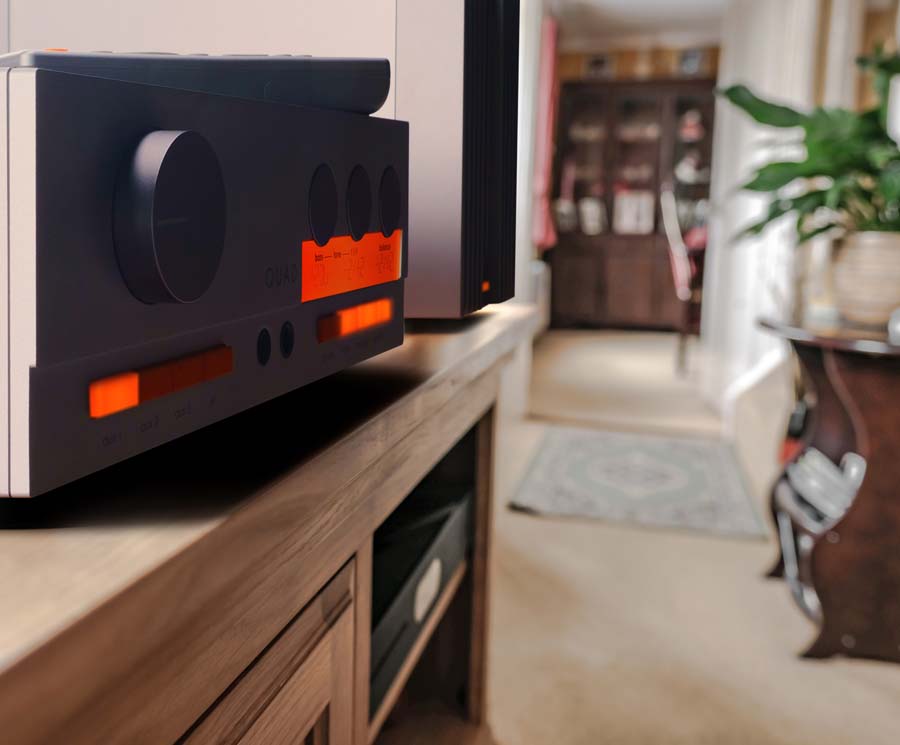

Firstly, I auditioned the headphone output and was highly impressed. The clarity, bandwidth and depth of the soundstage were surprisingly good for a line-output preamplifier. My Audio Technica ATH-A1000z’s delighted in all that I played. The sound was pure and detailed, with no fatigue, unlike the headphone output from a recently auditioned integrated. From pop to rock and jazz to classics, it could handle it all. Frequencies from the lowest to the highest were craftily integrated, giving a musical and fulfilling sound.
For the purpose of the review, I needed to plug in the 303, so most of the listening was through my three sets of speakers. First on was the ‘Jethro Tull Christmas Album’ (2003), appropriate as we come to the end of 2024. Whether you are into Christmas or not, Ian Anderson’s music caters for all needs, mixing folk, jazz, pop, rock and classical into a cleverly assembled musical feast. “Fresh Snow at Christmas” has Ian’s beautiful flute playing, of course, and it sounds so clear and tight on the QUAD. Even the “phasing” effect on his vocals in places comes across as accurate and fun. Tom-toms and bass drum in “Holly Herald” are precise, extended, and faster than in the original 33/303. Accordion is tight and clear, and the stereo soundstage with all the instruments is spot on. The glockenspiel at the top end not only gives us a sense of Christmas but also comes across with authority. Martin Barre’s acoustic guitar playing is tight and really shows off his talents, especially in Faure’s ‘Pavane’, a brilliantly orchestrated track with clear, tight and fast drums and all sounding ridiculously musical through Qobuz. Only the synth strings show the track’s age, but the soundstage from drums, guitar, flute and synth is very 3D with a clarity and musicality that blend so well together. The fact that the flute overshadows everything else doesn’t offend my ears in any way. Ian’s sense of humour in “Greensleeved” with its 7-8 time signature just sounds so “right” in this (incorrectly assumed) Henry VIII tune. It doesn’t sound rushed, and the sweetness and articulation of the piano and Hammond organ interlude is just so…QUAD.

Messiaen’s Turangalila Symphonie (Yuja Wang, Cécile Lartigau, DG, 2024) would be interesting to play on any HiFi equipment, especially with the Ondes Martinot (“musical waves”), a (then) weird electronic instrument that loves to “waver” up and down in frequency like a Theramin. Combined with full orchestra and pianoforte, plus bass drum blasts, it sounds quite musical and “easy listening” on the 33/303. There is no harshness here, but rather a conglomeration of smooth, sharp, meaty, weird, thick, thin, tonal and atonal musical discoveries that I was amazed at when I first studied the work at University in 1980.
Turning to much easier listening, and Katie Melua’s new ‘Live at the Royal Albert Hall’ double album, played using the MC phono-stage of the 33, I could sit back and take in all the great instrumentation, and of course her iconic voice, that – like the Ondes Martinot – regularly wavers up and down to hit the right notes. With piano and guitar, and the warmth of her voice, I made sure I had time to listen to the complete album. “9 Million Bicycles” and “Plane Song” were just so ethereal with space and atmosphere that many amps over twice the price just cannot stage. All I needed now was a pipe and slippers to relive the musical excitement that must have taken place in the 1960s – I jest, of course. “Call off the Search” would be an appropriately named final song to play. I had found my nirvana. This might not be the last word in audio, but what it did do, it did so well. A silky-smooth sound that was still very accurate, even at high power. More importantly, it was non-fatiguing, with rich mids and juicy bass. There was excellent detail at all frequencies, and most importantly, this had the sound signature of the original 33, only now even better. Katie’s voice was accurate, and the synth and drums just tuned the track into musical treacle. I did find the phono-stage slightly slowed things down, and the output from my Kontrapunkt b cartridge meant I needed to turn up the wick past the midway point in pieces such as Pink Floyd’s ‘The Division Bell’.
Finally, to jazz that would have been played from the days of the original 33/303, and Miles Davis’ “So What” (‘A Kind of Blue’ 1959). The growl from the horn was still like sandpaper that I heard so well from my Krell and Synthesis power-amps. Nothing was missing. It just sounded fluid and musical. “Pharaoh’s Dance” (Bitches Brew 1970) is a 20-minute track exploring melodic lines and drum rhythms with two drum kits on either side of the stage (Lenny White and Jack DeJohnette) plus three keyboards left, mid and right (Joe Zawinul, Larry Young, Chick Corea), joined by a plethora of instruments and melodic lines in between. Structures and strategies intertwined, and all were beautifully assembled by the QUAD. This was highly engrossing and very easy to listen to, just like the Messiaen earlier. Nothing was too much, and if I did want a bit more grunt and energy, I could simply add another matching 303!
QUIBBLES
Well, that remote for a start, and the somewhat poorly written but gorgeous-looking manual. The orange lights were also a little confusing, as stated above. Apart from that, there is nothing to moan about.
CONCLUSION
This is certainly no 21st-century Ford Capri. It’s more like the new 2024 Renault 4 and 5; still looking very familiar but with added 21st-century technology and visual finesse that Mr Walker would have wanted 57 years ago. He would be very proud if he could hear just how good the sound and excellent value this new QUAD pairing is. It might not be the best-sounding that money can buy, but at its price, it is a Christmas present everyone deserves.
Santa, I hope you’re reading this….
AT A GLANCE
Build Quality:
Faultless!
They look brilliant, but I wish the printing on the 33 was darker so you can read it, and that the script showing on the LCD display was more visible.
Sound Quality:
Typical silky-smooth QUAD of the last century, but with improvements in clarity, soundstage and charm
Value For Money:
At £1199 each unit, and the possibility of adding another 303 and bridging the output for more power and oomph, this is excellent value. With clever electronics and Walker’s tilt control in the 33 and the Triples output stages still employed in the 303, plus balanced XLR connecting up the two, there is certainly a lot to love about this new duo.
We Loved:
QUAD 33:
Looks just like my old 33!
Very quiet in use
Excellent facilities including MM and MC phono
Excellent headphone output quality
Useful remote control
QUAD 303:
Worked well on all types of music.
Silky smooth, fluid sound that is so QUAD.
Dynamic and controlled.
Class AB with toroidal transformer!
We Didn’t Love So Much:
Remote control is perhaps an afterthought.
The manual needs checking over.
Nothing to complain about the looks and the overall sound quality!
Elevator Pitch Review: I always dreamed of having a 33/405 when I was a child, dismissing the 303 power amp because everyone talked about its bigger and better-looking brother. But the 303 was actually a mind-bogglingly good product when it entered service in 1967, and it wasn’t until I owned one complete with the beautiful-looking 33 pre-amplifier and FM3 tuner in the 90s that I realised just how good it was. The trio have been by my side for over 30 years now. When I heard about a new retro 33/303, I was so excited that I had to hear if technology has improved over the last 57 years and if the combination could sound even better. Well, the team at QUAD, minus Peter Walker, unfortunately, have proved that even the original can be bettered, and then by bridging and adding a second 303, you can have even more power and detail. For under £2400 for the basic outfit, this is a major feat for the very British company set up in 1936, just on looks alone.
Sound-wise? Well, I want one!
Janine Elliot
System used:
Astell and Kern SE180 (FLAC, DSD and Qobuz), Samsung A23 into iFi xDSD (DAC); Pre-Audio GL-1102N/Ortofon Kontrapunkt b (turntable/MC cartridge); Krell KPS20i (CD); Wilson Benesch Arc, Graham LS5/9, Chartwell LS3/5a, Tannoy Mercury MX3 (speakers); Townshend F1 and Isolda cables, Coppice Audio stand and Townshend rack.
SPECIFICATION
QUAD 33 Pre Amplifier (2024 EDITION)
Inputs 1x stereo XLR; 3x stereo RCA line level; 1x stereo RCA phono (MM/MC)
Outputs 1x stereo XLR; 1x stereo RCA; 1x stereo RCA AUX; 1x headphone; 2x 12V triggers
Other facilities: Bass and Tilt tone controls, balance control, and remote control
Dimensions (WxHxD) 258×82.9x165mm
QUAD 303 STEREO POWER AMPLIFIER (2024 EDITION)
Amplifier type Class AB with ‘triples’ output stage; stereo and bridged modes
Power output – stereo 2x 50W (8 ohms, THD<1%); 2x 70W (4 ohms, THD<1%)
Power output – bridged 2x 140W (8 ohms, THD<1%); 2x 170W (4 ohms, THD<1%)
Distortion (THD) <0.003% (1kHz 8 ohms @ 2/3 max. power)
Maximum current delivery 2x 10A
Inputs 1x stereo XLR; 1x stereo RCA
Outputs 1x stereo speaker binding posts; 1x 12V trigger + link
Dimensions (WxHxD) 120x176x325mm











































































